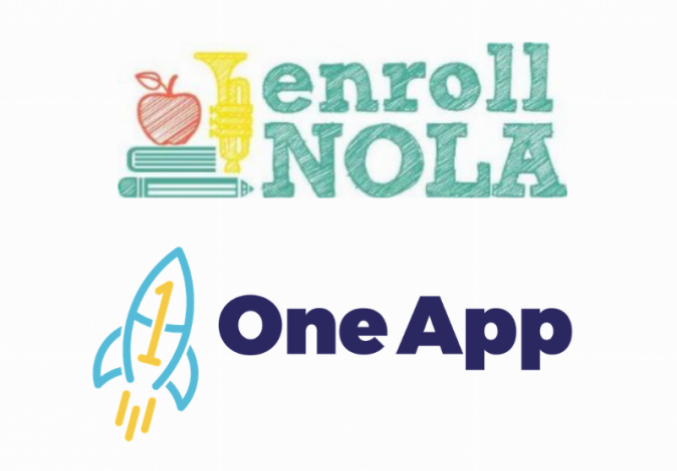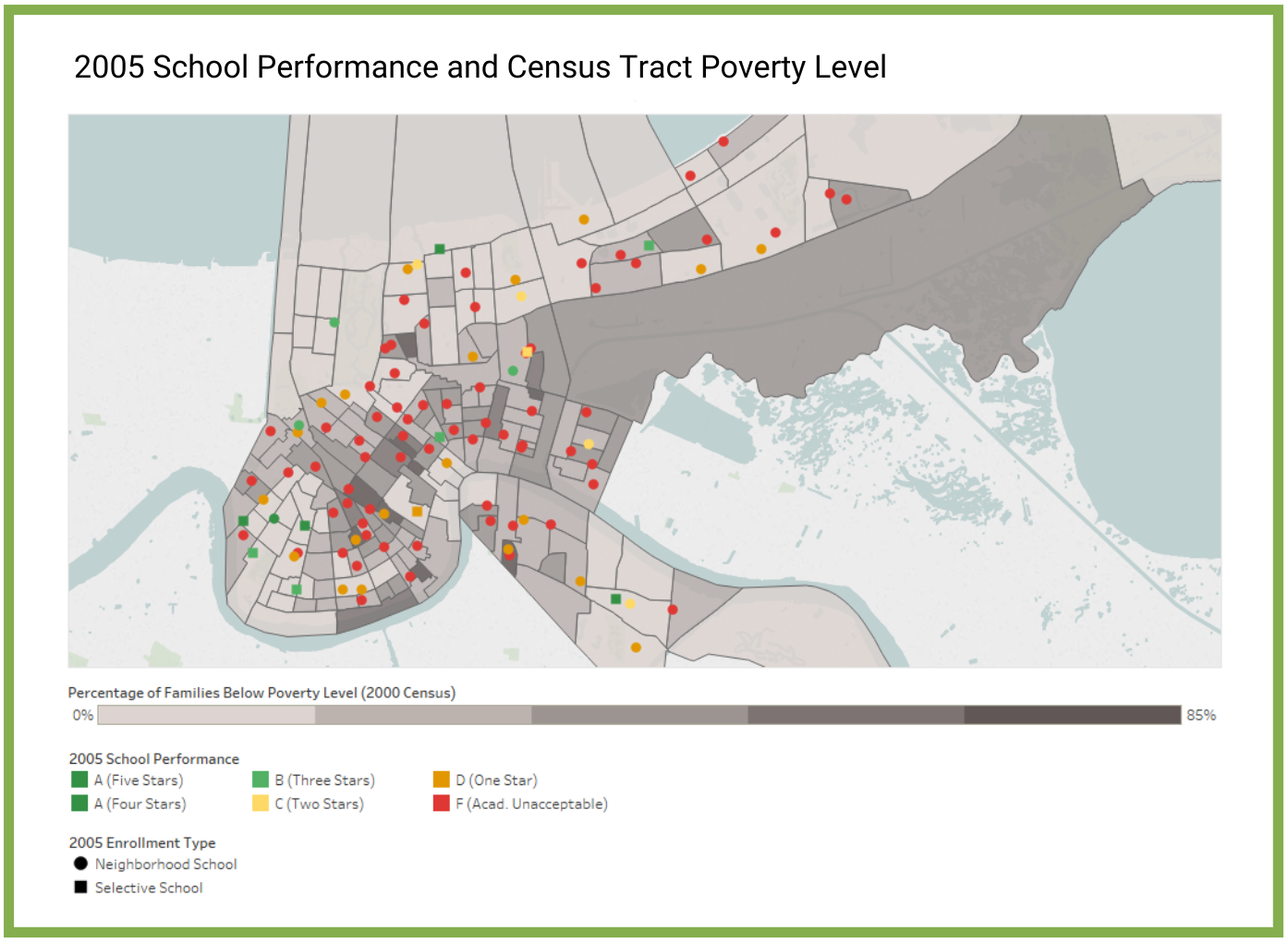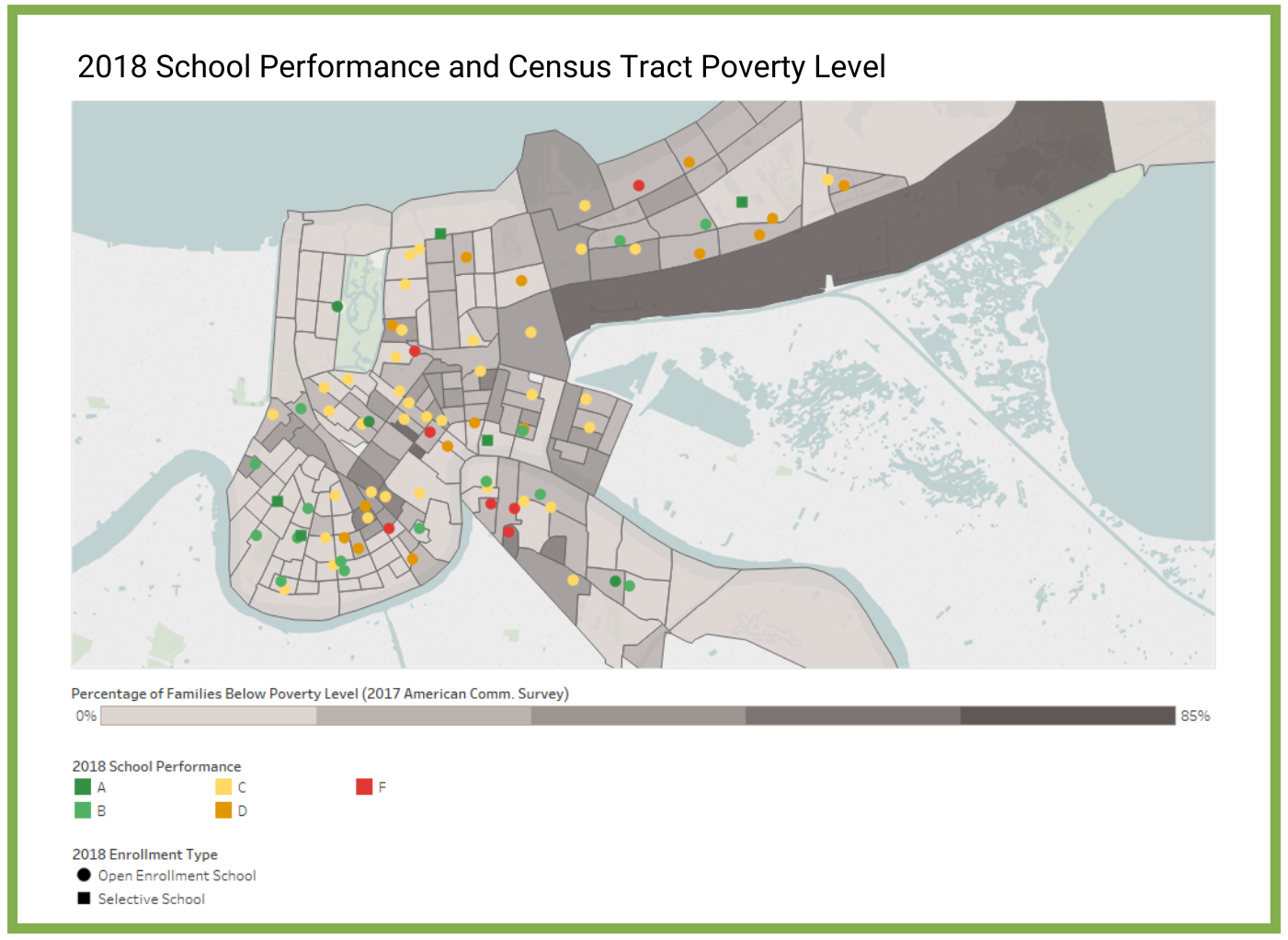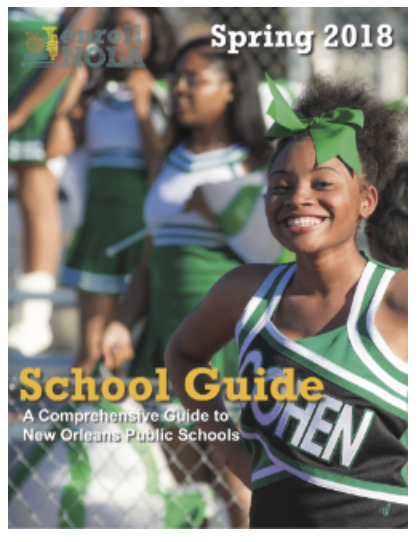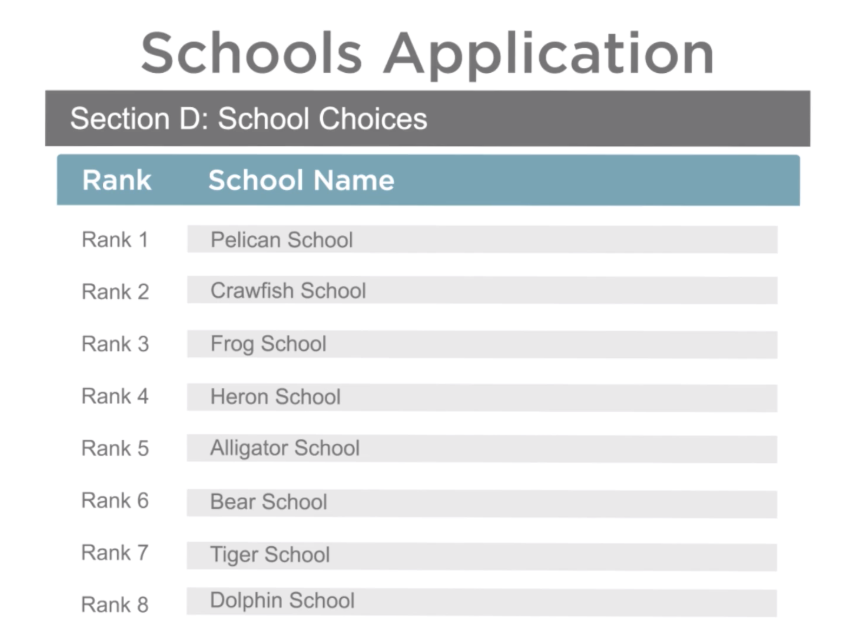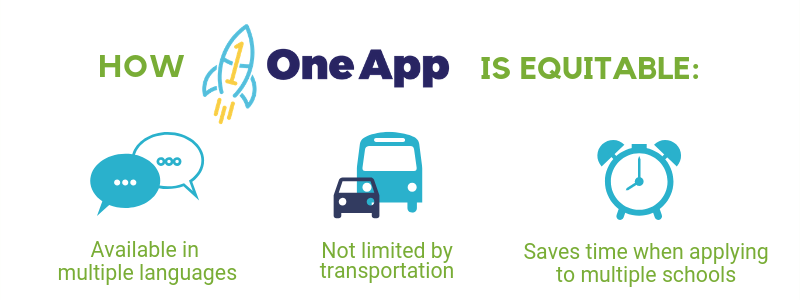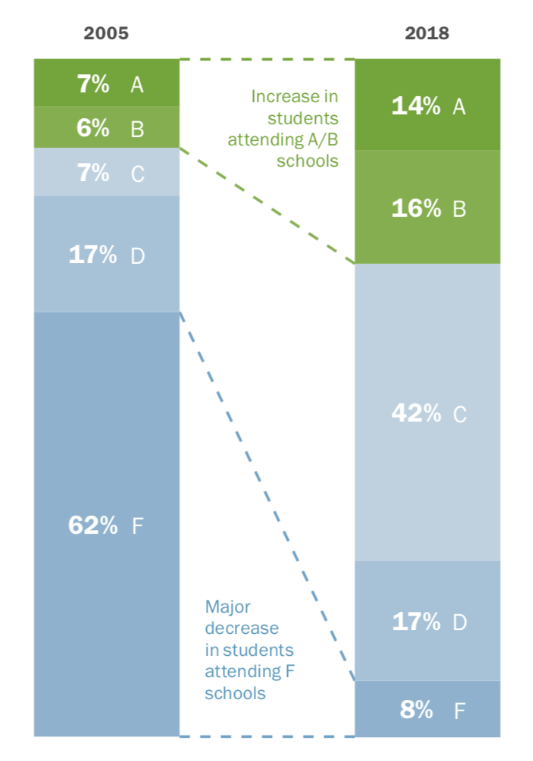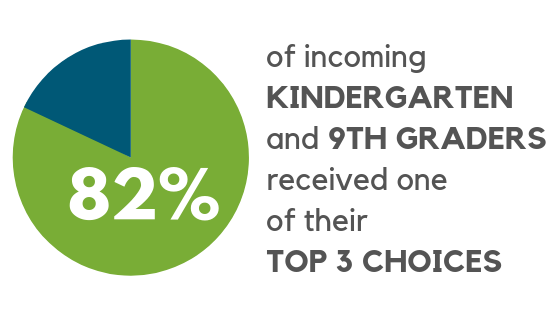For Years, Neighborhoods Determined School Options
For many years in New Orleans, the quality of your education depended on where you lived. If the school near you was excellent, you got to go to an excellent school. If the school near you was struggling, you had no choice but to go there — unless you were lucky enough to make it into a private or selective school. This system was not fair. It also disproportionately left students of color and students from low-income families in low-performing schools.
In 2005, the La. Dept. of Education (LDOE) classified school performance using a start rating system. According to LDOE, ratings from the old start system and the current letter grade system can be compared as follows: 4-5 starts = A, 3 stars = B, 2 stars = C, 1 = D, 0 (“Academically Unacceptable”) = F.
This map represents public schools in New Orleans in 2005. Schools are represented by marks, which are color-coded according to their school performance rating. High-performing schools are concentrated in certain neighborhoods, as are low-performing schools. If a public school student lived in a neighborhood with a low-performing school, and was not eligible to attend a selective admissions school instead, then the student had to attend the low-performing school.
Today, there are more high-quality options across the city, and students can apply for schools in any neighborhood, regardless of where they live.
The Charter System Moved Us Closer to Equity, While Applications Held Us Back
After Hurricane Katrina, our school system changed to one of citywide school choice. Top open-enrollment schools were no longer wholly reserved for their neighbors. This brought us closer to fairness, but still fell short.
The process of signing up kept folks out. Schools each had their own applications. Some schools required families to hand in those applications in person. This meant families without strong access to transportation missed out. Other times, the applications were only written in English, so parents who were not fluent missed out. Some families simply had more time to fill in (and drop off) more applications, so their children had a better chance of getting into at least one school of their choice. Additionally, because applications were neither coordinated nor on a single timeline, some students could get into multiple schools while other students got into none.
OneApp: Convenience, Transparency, Equity
So in 2012, the Recovery School District (RSD) created a centralized enrollment system called EnrollNOLA to try to fix these problems. Instead of each school or charter network providing their own applications and managing their own admissions processes independently, EnrollNOLA provides one unified application and one coordinated process for admissions — OneApp. EnrollNOLA also manages mid-year admissions, transfers, and readmissions, working closely with students in special circumstances, like those without permanent housing or those who were homebound for medical reasons.
EnrollNOLA provides a “School Guide” with information on all our city’s public schools.
OneApp enables families to apply to up to twelve participating schools of their choice, located anywhere across New Orleans, and ultimately provides each student with a single school placement. Families participate in OneApp by completing an online form and listing up to twelve schools, ranked in order of preference.
Once all families submit their forms, a computer program matches each student with an open spot at a participating school based on their ranked school preferences, along with certain other “priority” factors. (These factors, such as the student’s geographic zone or where their sibling goes to school, are all listed clearly and publicly on EnrollNOLA’s website.) The program uses that information to calculate which school a child can attend.
This program was created carefully by researchers and has been vetted by the Louisiana Legislative Auditor. Having OneApp’s decision-making formula managed by a computer instead of people allows the process to work without bias. When decisions are made by a computer, there can be no loopholes and no special treatment based on “who you know.” Instead, placement is based on the schools a family listed and the number of open spaces at that school, as well as the publicly disclosed priority factors.
The EnrollNOLA team provides an explanatory video on the application process. This screenshot demonstrates the way families can rank their school choices.
The goal in creating OneApp was to achieve convenience, transparency, and equity in the application process.
Convenience: OneApp brings together nearly all open-enrollment school applications as well as some selective ones, so families do not need to spend so much time on the enrollment process. Parents can submit the form online on their own devices or at designated Family Resource Centers.
Transparency: School placement decisions are no longer made “behind closed doors.” OneApp makes its formula clear — you can find out exactly how much geography or a sibling’s placement matters. There is no way for schools or individuals to pull the strings. All applications go through the same process, no matter who turned them in, and that process has been made public.
Equity: Equity is at the heart of OneApp. The creators of OneApp collaborated with families, educators, and other members of our community to design a system that is as equitable and easy to use as possible. There is no “leg up” for families with extra time or easier access to transportation. Getting an application in early has no effect on the likelihood of getting into a given school. Instead, all applications are processed on the same day, and parents apply to many schools through the single form. Schools can no longer indirectly give preference to families with cars by requiring applicants to drop off their applications in person. In addition, the application was created with accessibility in mind. Today’s OneApp, for instance, can be read in English, Spanish, and Vietnamese, reflecting the diversity of languages spoken in our city.
OneApp Cannot Create the Additional Great Schools We Need
OneApp has revolutionized the way families can apply for our city’s open-enrollment schools (and some selective-admissions ones). It makes that process easier and fairer than ever before. But it is only an application. It maximizes equity in a system that is unequal because of generational biases and systemic inequities. OneApp cannot create more great schools. Instead, it provides equal access to the great schools that already exist.
A small number of schools receive “no score” in a given year if they are new, recently transformed, or do not yet serve tested grade levels (3-12); in 2005 and 2018, 1% and 4% of students attended such schools, respectively.
In 2005, the La. Dept. of Education (LDOE) classified school performance using a star rating system. According to LDOE, ratings from the old star system and the current letter grade system can be compared as follows: 4-5 stars = A, 3 = B, 2 = C, 1 = D, 0 (“Academically Unacceptable”) = F.
Frustration with OneApp lays bare a grave problem: we do not have enough of those great schools. Since 2005, the percentage of “A” and “B” schools in our city has more than doubled. Unfortunately, today that represents just under a third of our schools, some of which require a test to get in. There is simply not enough room in those “A” and “B” school buildings for all of the city’s children. Schools are in high demand for reasons beyond letter grades, too — factors like strong culture, a powerful history and alumni community, unique offerings, or excellent athletics or music programs play a part. There are not enough schools with these strengths, either. So our job as a city is clear: we must help schools improve. We need more schools like the ones our students and parents want. As we do so, OneApp will continue to manage fair access to the best schools our city has.
2019 OneApp Placed Most Students in One of Their Preferred Schools
There is much to celebrate already. For the 2019 Main Round of OneApp, the majority of students received a match with one of the schools on their families’ list of preferred schools. For students in kindergarten and 9th grade, 82% of families received one of their top three choices. Of the top ten in-demand high schools for 9th graders, half had match rates of over 95%.
Such placement statistics are promising. They tell us that next fall, the majority of our city’s students will walk into schools that they and their family chose. Even so, the process remains stressful for many, and disappointing for some. This must motivate us to continue to work toward a system in which families have only strong options. Families should not have to choose between the school near their home and an A-rated school, or between a school with a great math program and one with a strong band. When this is a reality, OneApp will simply be a tool for families to rank preference between uniformly excellent schools.
Such a dream may seem far-fetched, but so was the dream of a system in which a student’s neighborhood did not determine their educational options. We must take the continued progress we have made so far as proof for the potential ahead; we will keep building this system around equity, we will strengthen these schools, we will support our teachers and leaders and our children will thrive.
Note: Neither map displayed above includes alternative schools. These schools did not receive School Performance Scores in 2005 and therefore could not be color-coded by performance; to ensure alignment across the maps, alternative schools were thus excluded in both maps.
